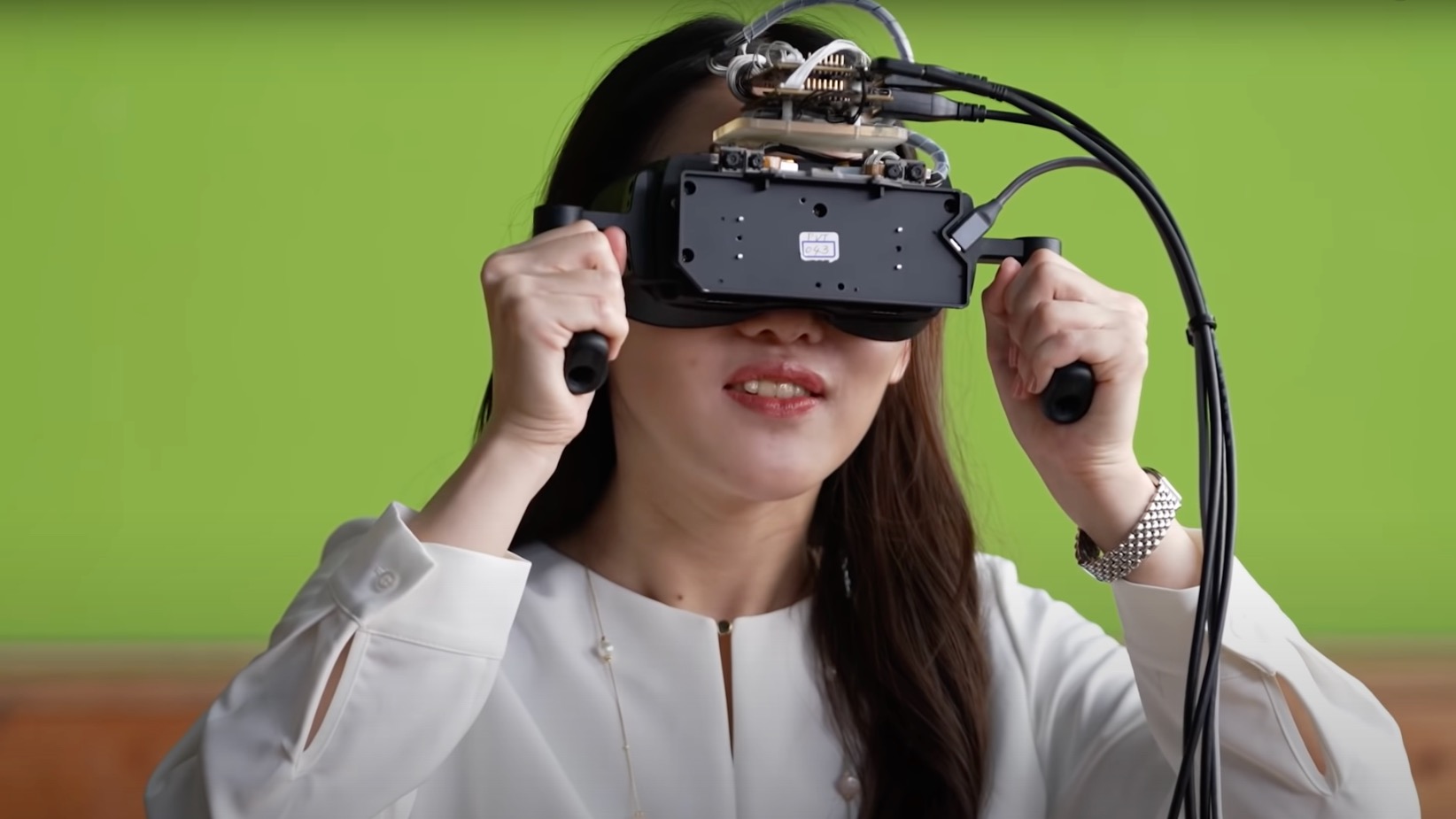Sony teases 4K OLED microdisplay for VR, discusses future of PS5 3D audio
All the AV highlights from its recent Sony Technology Day

Sony has shown off some futuristic AV tech at its Sony Technology Day, including an OLED microdisplay for virtual reality. It also discussed the future of the PS5's 3D audio tech – read on for all the highlights, and to see some of the technology in action.
First up, VR. In a presentation entitled 'Share experiences with an overwhelming sense of reality: OLED Microdisplay and low latency head mount display', Sony's R&D lab shows off a VR headset capable of displaying a 4K resolution with one eye and 8K with two eyes. It has more than twice the number of pixels as a smartphone OLED display and promises to make them invisible, making for a much more realistic and immersive VR experience.
Latency compensation also reduces any potential delay, making it less likely to make the wearer feel sick (a common problem when it comes to VR headsets).
This has huge potential for games, naturally, but also for movies and online worlds (think this metaverse that Facebook has been talking up of late). It also dovetails into rumours concerning a new PlayStation VR headset that's supposedly in the works.
Take a look below.
Sony also talked about the PS5's 3D audio tech, and suggested how it might evolve.
But first, a little history. To develop 3D audio, Sony developed its own DSP (digital signal processor). The video then digs into how 3D audio works, including the mechanics of binaural reproduction.
Get the What Hi-Fi? Newsletter
The latest hi-fi, home cinema and tech news, reviews, buying advice and deals, direct to your inbox.
Then comes the good stuff: "where we are headed with this technology."
Sony talks of maintaining its existing relationships with other Sony divisions and third-party game studios as it works to "refine our reproduction of soundscape and further develop our creative environment."
It also talks of further personalisation, and "adapting to the playback environment of individual users" to give the PS5 experience "greater depth."
Could it mean individual sound profiles for each player? Quite possibly. That, combined with noise-cancelling/volume compensation based on the wearer's surroundings would certainly fit Sony's description.
Away from the AV side of things, Sony also showed off a robot arm that can adjust its grip strength depending on what it's holding, machine-learning supersampling tech that improves resolution and performance for ray-traced rendering, and even a system of satellites for watching over the Earth's resources to help combat climate change. With all this technology on display, it looks like Sony's going to be pretty busy over the next few years!
You can see all the video presentations here.
MORE:
Sony WF-1000XM4 vs WF-1000XM3: which are better?
Read our guide to the best in-ear headphones
Find out where to buy a PS5
Joe has been writing about tech for 20 years, first on staff at T3 magazine, then in a freelance capacity for Stuff, The Sunday Times Travel Magazine (now defunct), Men's Health, GQ, The Mirror, Trusted Reviews, TechRadar and many more. His specialities include all things mobile, headphones and speakers that he can't justifying spending money on.

